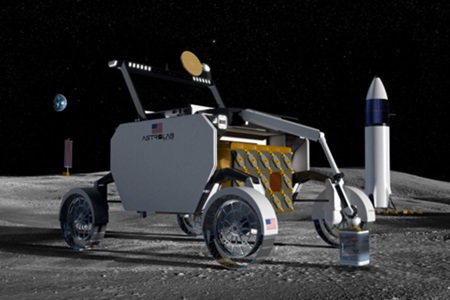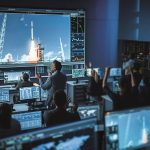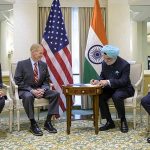Astrolab announced a contract with SpaceX in March to launch FLEX on that mission on a Starship commercial lander.
 Astrolab, Inc. has inked agreements with eight enterprise customers for its Flexible Logistics and Exploration (FLEX) rover, set to deploy payloads on the upcoming lunar mission, Mission 1. Notable participants include Argo Space, Astroport, Avalon Space, Interstellar Lab, and LifeShip, with three more customers withholding payload details until closer to launch. The collective value of these contracts exceeds $160m.
Astrolab, Inc. has inked agreements with eight enterprise customers for its Flexible Logistics and Exploration (FLEX) rover, set to deploy payloads on the upcoming lunar mission, Mission 1. Notable participants include Argo Space, Astroport, Avalon Space, Interstellar Lab, and LifeShip, with three more customers withholding payload details until closer to launch. The collective value of these contracts exceeds $160m.
SpaceX is slated to transport the FLEX rover to the lunar surface using the Starship launch system by mid-2026. Post-landing, FLEX will deploy payloads for the participating customers.
Jaret Matthews, CEO and Founder of Astrolab, said: Our entire Astrolab team is excited to welcome these businesses to Mission 1. Together, they represent a cross-section of the emerging lunar economy. We expect to make additional customer announcements as we get closer to our launch date.
Matthews added that given FLEXs total payload capacity of 1,500 kg, Astrolab is able to substantially lower the cost of deploying payloads on the lunar surface while providing manoeuvrability, range, power, and communications capabilities. The company estimates its prices are approximately ten times more affordable than those of competitors.
Among the revealed payloads, Argo Space Corp. plans to use FLEX to advance technology for harvesting water from lunar regolith, a crucial step toward making in-space transportation more abundant and building a sustainable lunar economy. Astroport Space Technologies aims to utilise FLEX in melting regolith to create infrastructure components, including roads, launch pads, and shelters.
Robert Carlisle, CEO of Argo Space, said: “Were excited to work with Astrolab on this and future missions to catalyze a commercial Lunar economy and a sustained presence on the Moon.”
Sam Ximenes, CEO of Astroport, added: “Our ideal customer for our personalised brick programme is someone from an Artemis Accords signatory country who places an order for a brick to be made from the basalt soil of their respective country. FLEX will use its robotic arm to install these bricks to begin the construction of this initial lunar road.”
Avalon Space intends to conduct a series of experiments focused on the lunar economy, emphasising the transformative potential of the next decade in beyond-Earth orbit development.
Dr. Nadeem Ghafoor, CEO of Avalon Space, stated: I dont think anyone doubts that there will likely be a pre-Starship and post-Starship point in human history. Were thrilled to be working with Astrolab and our international and commercial partners on this first mission to help unlock the potential of this new era of beyond-Earth orbit development. The next decade is going to change everything, and were looking forward to doing our part to help it be as peaceful, collaborative, impactful and economically significant as possible.
Interstellar Lab, a multinational venture, will deploy plant pods to study the impact of the lunar environment on plant growth.
Barbara Belvisi, founder and CEO of Interstellar Lab, commented: “We are very excited to team up with Astrolab for our mission LITTLE PRINCE. As Antoine Saint Exupéry wrote: ‘If you love a flower that lives on a star, it is sweet to look at the sky at night. All the stars are a-bloom with flowers.”
Belvisi added: This is the first of many Interstellar Lab missions. We look forward to helping our terrestrial customers access Space and grow a garden on the Moon.
LifeShip, Inc., based in San Diego, California, is set to deliver a capsule containing a DNA seed bank and data archive to the lunar surface, inviting people worldwide to become part of humanity’s eternal legacy amongst the stars.
Ben Haldeman, CEO of LifeShip, remarked: “This is an exciting mission! With LifeShip, anyone can be part of humanity’s eternal legacy amongst the stars. People can add their DNA, photos, and stories at www.lifeship.com.”
Upon Mission 1’s completion, Astrolab’s FLEX rover will stand as the largest and most capable lunar rover to date, with a combined mass exceeding two tons and equipped with a highly dexterous robotic arm. This groundbreaking mission marks a significant stride in lunar exploration, providing expanded opportunities for scientific experiments and commercial ventures on the Moon’s surface.















































































